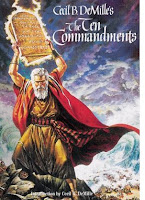
I follow a
physics newsletter with a humanist twist. This week he mentioned Pleasant Grove:
----------------------------------------------------------
THE ESTABLISHMENT CLAUSE: COMPOUNDING A SUPREME ERROR.
The establishment clause of the First Amendment sets the U.S. apart from every other country in the world. It is the American gift. The town of Pleasant Grove, Utah, however, has a monument to the Ten Commandments in the city park in obvious violation of the establishment clause. The problem is that in 2005, the Supreme Court had declined to require Texas to remove a Ten Commandments monument from the grounds of the state capital. The objection to the monument in that case had been raised by a homeless man
http://www.bobpark.org/WN05/wn030405.html . This prompted Pleasant Grove to erect a Ten Commandments monument. But then a group called Summum proposed to erect a similar monument bearing its Seven Aphorisms; the city refused. Summum may be a wacky religion, but after all, this is Utah. The case reached the U.S. Supreme Court, which on Wednesday unanimously agreed with the city that religious displays on government property are “government speech” and under control of local government. It seems all but certain that there will be more Ten Commandment cases.
----------------------------------------------------------------
According to Wikipedia, the
Summum believe the Seven Aphorisms were on the first tablets that Moses broke. Our loss.

While I'm out there on weird things, I found out that
Carl Sagan (my favorite secular humanist) sued
Apple Computers when he found out they were using his name as a code name for a product in development back in the 90's (HP does this all the time - it is a creative outlet for the engineers involved). He lost the suit, but the engineers involved change the name anyway, calling the project "BHA", short for Butt-head Astronomer. Sagan sued again (more rightfully so, I believe), but lost again. In a final snub, the engineers changed the product code a final time, this time to "LAW" for Lawyers Are Wimps. The public designation?
PowerMac 7100. I'm surprised such a smart man made such a fool of himself.
 I follow a physics newsletter with a humanist twist. This week he mentioned Pleasant Grove:
I follow a physics newsletter with a humanist twist. This week he mentioned Pleasant Grove: While I'm out there on weird things, I found out that Carl Sagan (my favorite secular humanist) sued Apple Computers when he found out they were using his name as a code name for a product in development back in the 90's (HP does this all the time - it is a creative outlet for the engineers involved). He lost the suit, but the engineers involved change the name anyway, calling the project "BHA", short for Butt-head Astronomer. Sagan sued again (more rightfully so, I believe), but lost again. In a final snub, the engineers changed the product code a final time, this time to "LAW" for Lawyers Are Wimps. The public designation? PowerMac 7100. I'm surprised such a smart man made such a fool of himself.
While I'm out there on weird things, I found out that Carl Sagan (my favorite secular humanist) sued Apple Computers when he found out they were using his name as a code name for a product in development back in the 90's (HP does this all the time - it is a creative outlet for the engineers involved). He lost the suit, but the engineers involved change the name anyway, calling the project "BHA", short for Butt-head Astronomer. Sagan sued again (more rightfully so, I believe), but lost again. In a final snub, the engineers changed the product code a final time, this time to "LAW" for Lawyers Are Wimps. The public designation? PowerMac 7100. I'm surprised such a smart man made such a fool of himself.
 If you look close, you can see the princess the dragon is guarding.
If you look close, you can see the princess the dragon is guarding.
 A little photoshoping (or free Gimp 2.6 in this case), some calculations on scaling, and a small wood frame and presto!
A little photoshoping (or free Gimp 2.6 in this case), some calculations on scaling, and a small wood frame and presto!